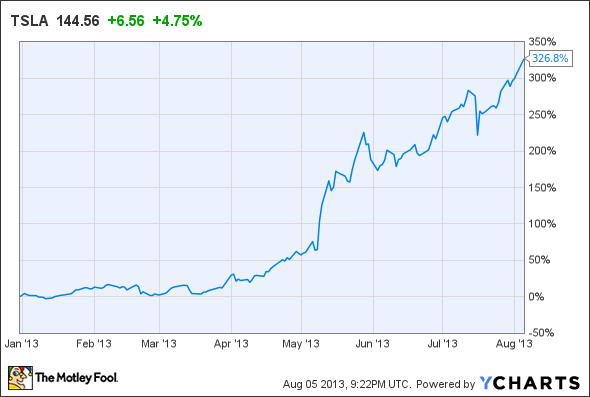An often overlooked factor that can have a significant impact on a company’s bottom line is the costs or benefits derived from environmental regulations. While Tesla Motors Inc (NASDAQ:TSLA) has been benefiting from its ability to sell “zero-emissions” credit to other automakers, a recent report suggests that the California Air Resources Board is considering changing certain rules that would negatively affect the company’s bottom line.
If this is catching you off guard, it shouldn’t. The practice has been going on since its pre-IPO days in 2009, when Honda Motor Co Ltd (ADR) (NYSE:HMC) and others were purchasing the credits at fairly meaningful levels. Still, with programs such as California’s Zero Emission Vehicle Program, or ZEV, going into effect, the future looks bright for Tesla Motors Inc (NASDAQ:TSLA) and the electric car.
California rule change and Tesla

The change that’s expected from the California Air Resources Board is an alteration to the “fast refueling” rule that gave extra zero-emissions credits to vehicles with easily switched batteries. A demonstration with Tesla Motors Inc (NASDAQ:TSLA)’s Model S showed the battery could be switched in less than two minutes. To achieve the top tier of ZEV credit, a vehicle must have a city range of 300 miles and be able to be 95% recharged in 15 minutes. The Tesla S can only get there by virtue of battery switching. In the absence of the rule, the company would still receive credit, but at a significantly reduced rate.
The longer view for Tesla
While the short-term impact of regulation changes at the California Air Resources Board may dampen Tesla’s profits, the long-term view remains very positive. At the end of 2012, the California ZEV program was granted the waiver it needed from the U.S. Environmental Protection Agency to make its mandate on ZEVs law. Under the mandate, beginning in 2018, automakers will be required to sell an increasing percentage of ZEVs. The percentage begins at 4.5% in 2018 and rises to 22% in 2025. Companies will be able to achieve partial credit for hybrids, calculated based on each vehicle’s battery-only range.
In addition, plug-in vehicles, or PEVs, have been gaining increasing popularity. Not only did Tesla grab 8.4% of the luxury car market in the first quarter of 2013, but PEVs overall have also seen a ramp-up in sales in their first 30 months of existence at twice the rate of hybrid sales. This isn’t a huge surprise, given the increasing popularity of green vehicles in general, but it demonstrates that Tesla is well in front of a sharply growing trend.
With government regulation driving the sales of ZEVs — Connecticut, Maine, Maryland, Massachusetts, New Jersey, New York, Oregon, Rhode Island, and Vermont all follow California emission standards — and with their popularity growing independently, Tesla’s future looks bright. The company is set to release earnings on Aug. 7, and that report should give us some further insight into the impact of the missing ZEV credits. But longer term, Tesla looks strong.
Where Tesla has been on everyone’s radar, one home-run investing opportunity has been slipping under Wall Street’s radar for months. But it won’t stay hidden much longer. Forward-thinking energy players such as General Electric and Ford have already plowed sizable amounts of research capital into this little-known stock, because they know it holds the key to the explosive profit power of the coming “no-choice fuel revolution.”
The article Tesla’s Earnings Could Be in Trouble originally appeared on Fool.com and is written by Doug Ehrman.
Fool contributor Doug Ehrman has no position in any stocks mentioned. The Motley Fool recommends and owns shares of Tesla Motors.
Copyright © 1995 – 2013 The Motley Fool, LLC. All rights reserved. The Motley Fool has a disclosure policy.





